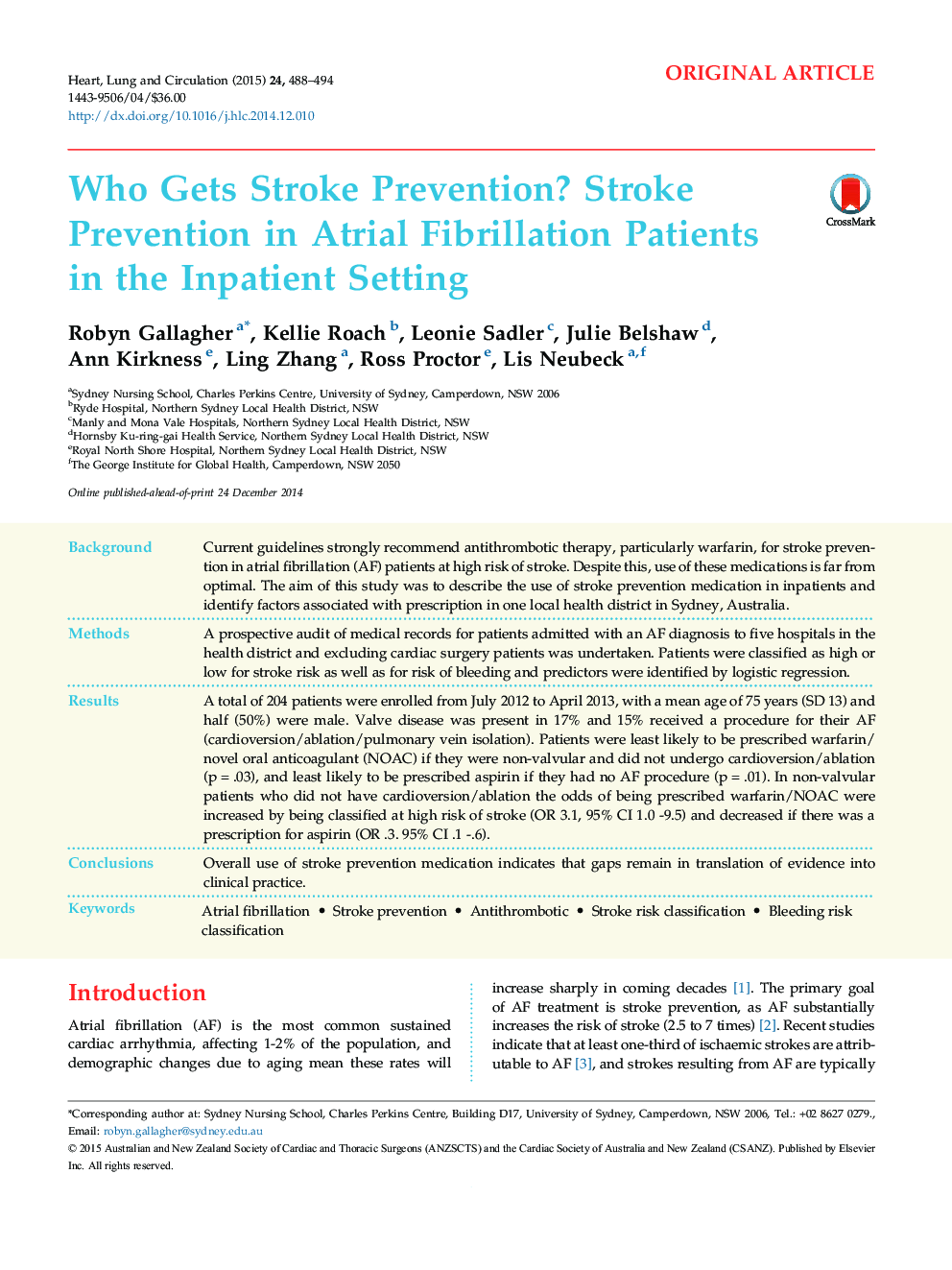| Article ID | Journal | Published Year | Pages | File Type |
|---|---|---|---|---|
| 2917366 | Heart, Lung and Circulation | 2015 | 7 Pages |
BackgroundCurrent guidelines strongly recommend antithrombotic therapy, particularly warfarin, for stroke prevention in atrial fibrillation (AF) patients at high risk of stroke. Despite this, use of these medications is far from optimal. The aim of this study was to describe the use of stroke prevention medication in inpatients and identify factors associated with prescription in one local health district in Sydney, Australia.MethodsA prospective audit of medical records for patients admitted with an AF diagnosis to five hospitals in the health district and excluding cardiac surgery patients was undertaken. Patients were classified as high or low for stroke risk as well as for risk of bleeding and predictors were identified by logistic regression.ResultsA total of 204 patients were enrolled from July 2012 to April 2013, with a mean age of 75 years (SD 13) and half (50%) were male. Valve disease was present in 17% and 15% received a procedure for their AF (cardioversion/ablation/pulmonary vein isolation). Patients were least likely to be prescribed warfarin/novel oral anticoagulant (NOAC) if they were non-valvular and did not undergo cardioversion/ablation (p = .03), and least likely to be prescribed aspirin if they had no AF procedure (p = .01). In non-valvular patients who did not have cardioversion/ablation the odds of being prescribed warfarin/NOAC were increased by being classified at high risk of stroke (OR 3.1, 95% CI 1.0 -9.5) and decreased if there was a prescription for aspirin (OR .3. 95% CI .1 -.6).ConclusionsOverall use of stroke prevention medication indicates that gaps remain in translation of evidence into clinical practice.
